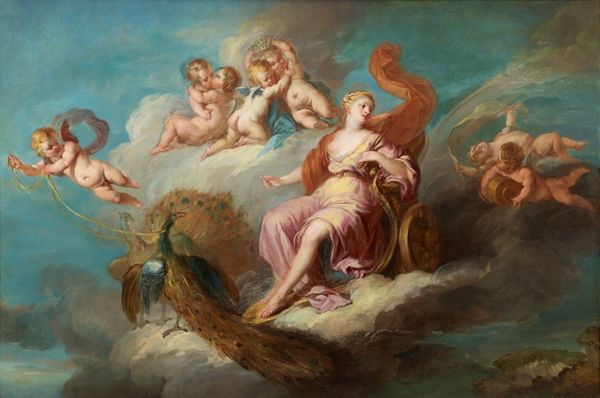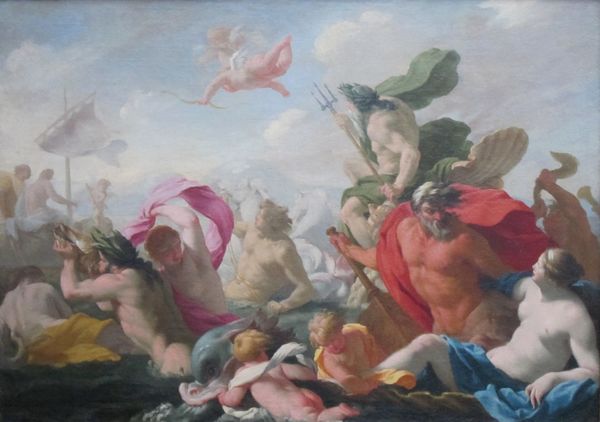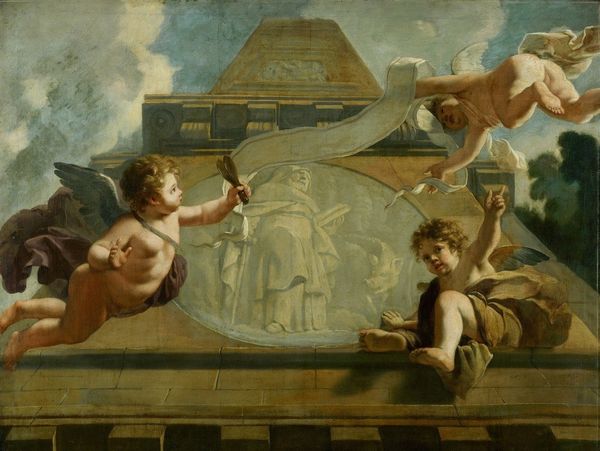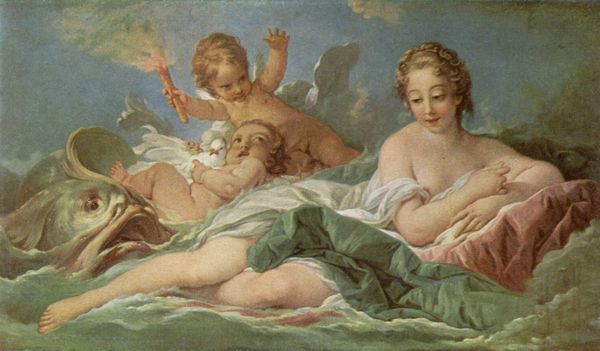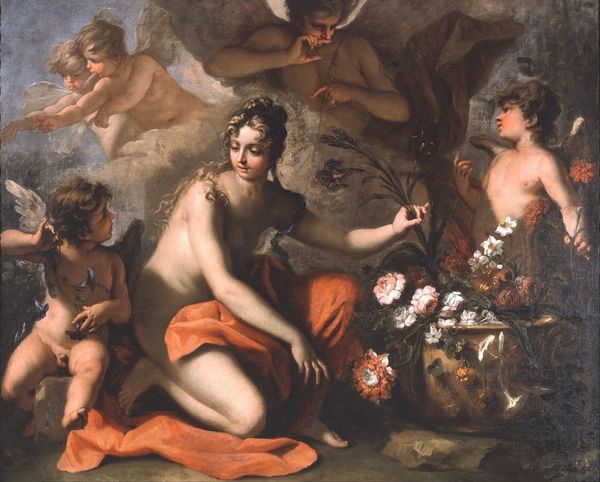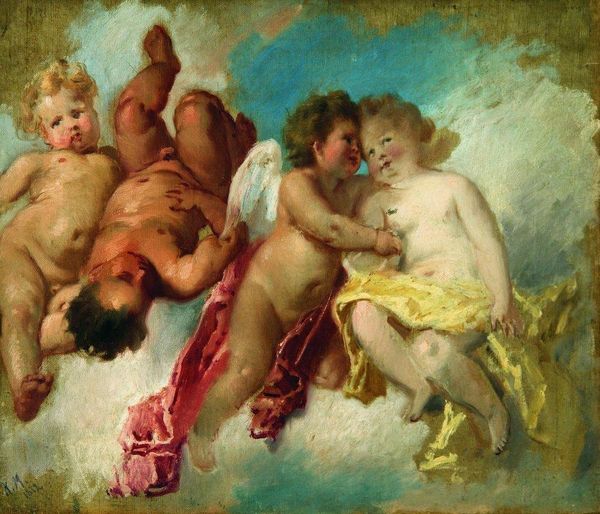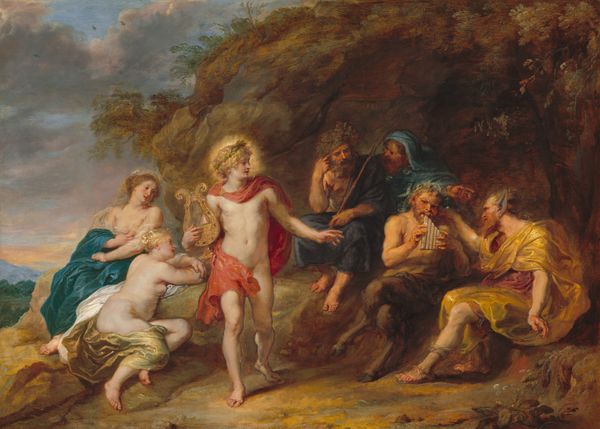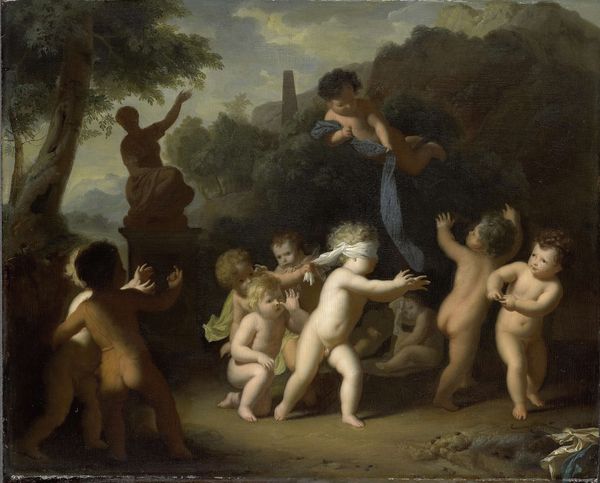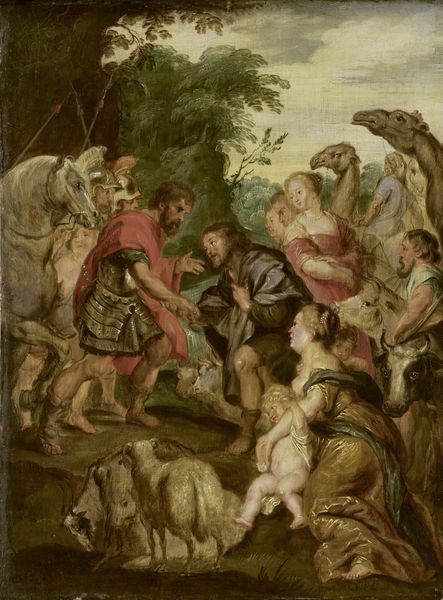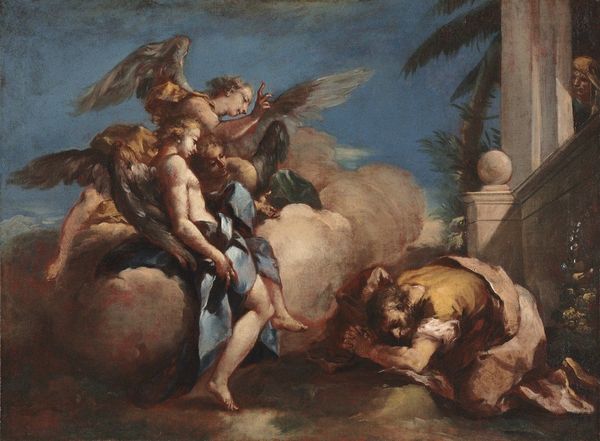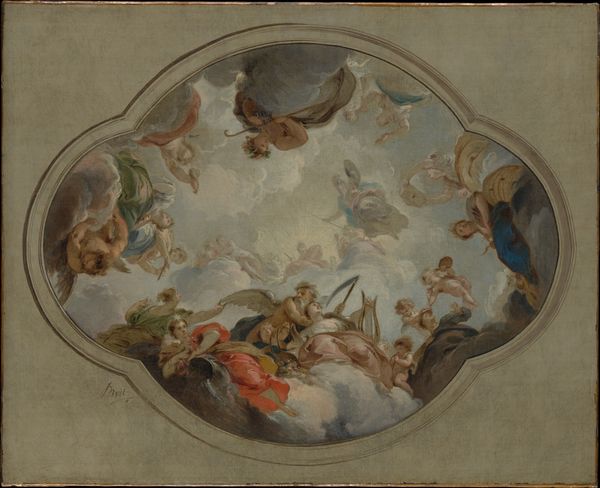
oil-paint
#
portrait
#
allegory
#
baroque
#
oil-paint
#
figuration
#
oil painting
#
rococo
Dimensions: height 30 cm, width 35 cm, depth 4 cm
Copyright: Rijks Museum: Open Domain
Curator: Welcome! Here we have "Putti with Mirrors," an oil painting executed between 1725 and 1744 by the Dutch artist Jacob de Wit. Editor: My first impression is one of lightness, both in terms of subject matter and palette. The delicate application of paint and airy composition create a dreamlike and almost ethereal feeling. Curator: Indeed, de Wit was celebrated for his "witjes," or "whiteys," referring to these grisaille paintings that often depicted playful putti. Considering the historical context, these images frequently appeared in wealthy homes as over-door or ceiling decorations, representing worldly delight. In the art of the 18th century, the representation of children’s bodies reinforced colonial structures where the bodies of white children signaled purity and innocence in ways very distinct from the perception of children of color, particularly in the slaveholding regions. Editor: I find the arrangement intriguing, not only with the implied perspective looking up towards them, but also considering the shapes they create together. The curves of the putti contrast beautifully with the gilded rectilinear shapes of the mirrors themselves, a duality which provides structure for the swirling action within the frame. Curator: The mirrors are not mere decoration; they invite us to consider themes of vanity and self-reflection. The putti, cavorting around these symbols, could be interpreted as a commentary on the fleeting nature of beauty or the allure of material possessions. Further analysis considering gender reveals a tendency to ascribe these sorts of "frivolous" symbolic attributes—vanity, beauty, and the ephemeral—specifically to a feminized experience within the patriarchal context of the time. Editor: Yes, and that juxtaposition leads to more formal considerations: observe the contrast between the warmth of the flesh tones against the coolness of the cloudy background. This limited palette further emphasizes the figures’ presence. Curator: Exactly. By situating De Wit’s artwork within broader narratives of power, we start to realize how even seemingly innocent images served specific cultural functions. It reminds us that artistic expression cannot be separated from the dominant ideologies circulating when and where a work was made. Editor: I find this careful arrangement allows for our own gaze to mirror those cherubic figures—framed not by the gilt, but the canvas. The intentional construction within the composition and rendering of texture draw me in! Curator: Absolutely! It is interesting how studying history helps us view art of the past with an eye to understanding the social norms it both propagated and existed within. Thank you for being here. Editor: My pleasure, indeed!
Comments
No comments
Be the first to comment and join the conversation on the ultimate creative platform.
